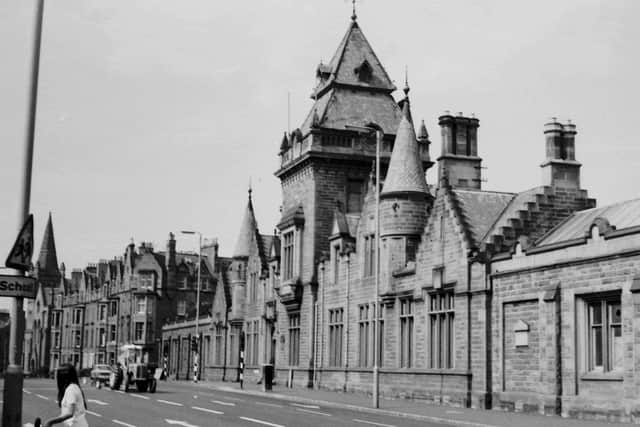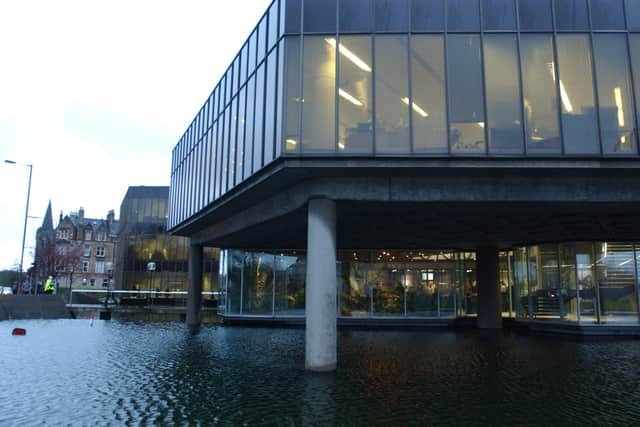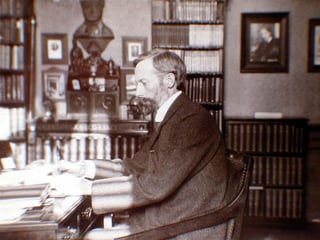The fascinating history behind legendary Edinburgh printworks Thomas Nelson & Sons
and live on Freeview channel 276
At their height, Thomas Nelson’s & Sons were producing tens of thousands of books every week from their printworks at Dalkeith Road.
Thomas Nelson started trading in Edinburgh in 1798 when he opened a second hand bookshop at West Bow in the Old Town, from which he published inexpensive reprints of classic books, making literature available to the working man.
Advertisement
Hide AdAdvertisement
Hide AdHis sons, William and Thomas, joined the business in the 1830s, and, within 15 years, they had opened a new printing house a Hope Park (now the Meadows), where the complete book manufacturing process was able to be carried out under one roof.
The Hope Park building was devastated by fire in 1879, but the Nelsons were back in operation, albeit on a limited scale and in temporary premises, within two months.
In 1882, the Nelsons had two handsome pillars erected at the east entrance to the Meadows near the site of their former premises at Hope Park.
These pillars are surmounted respectively by the unicorn and the lion and were given as a gift to the city in commemoration of the kindness and sympathy shown to the Nelsons by the magistrates at the time of the 1878 blaze and for allowing them to erect temporary accommodation in the Meadows.


Advertisement
Hide AdAdvertisement
Hide AdIn the 1880s, the printing family had moved to a state-of-the-art facility at Parkside Terrace. The new purpose-built headquarters were distinct for their Scots-baronial stylings of towers and turrets.
By the early 20th century, Thomas Nelson & Sons rose to become the most successful publishing company in the world.
Thomas Nelson’s vision was to make his employees all part of a “family”, and he provided recreational and sporting activities for them. A recreational area known as “The Field” together with a bowling club was sitated across Holyrood Park Road, where the Commonwealth Pool stands today.
In addition, the Parkside Institute, which still stands on Dalkeith Road, housed the company’s canteen, and also hosted lectures, dances and concerts in the evening.


Advertisement
Hide AdAdvertisement
Hide AdThe Nelson Hall, just a short distance away at Spittalfield Crescent, was opened as a reading room.
The new factory, facing Dalkeith Road adjacent to parkside, was capable of producing 200,000 books per week. It was equipped with the most modern printing and binding machinery of the day, and many of the contraptions were constructed by the Nelsons, the rotary printing press being of particular note.
In 1968, the printing and binding division of Nelson’s was sold to Morrions & Gibb, and the Parkside Works were demolished to make way for the offices of the Scottish Widows insurance company.
The Nelsons were a philanthropic family and used their vast wealth to build the Nelson Hall in 1913. Situated in Spittalfield Crescent, the Nelson Hall was intended to be used as a place where “persons of the working class and others can go to sit, read, write, converse and otherwise occupy themselves”.
Advertisement
Hide AdAdvertisement
Hide AdFurther Nelson Halls were established in Fountainbridge, Stockbridge and McDonald Road libraries, but the Southside building remained the only one that stood separate and was not part of a library. The Spittalfield Crescent venue was refurbished and reopened as a community centre in 2006.
This article is an excerpt from the new book Edinburgh’s Southside: History, People, Memories by Lisa Sibbald.
A message from the Editor:
Thank you for reading this article. We're more reliant on your support than ever as the shift in consumer habits brought about by coronavirus impacts our advertisers.
If you haven't already, please consider supporting our trusted, fact-checked journalism by taking out a digital subscription at https://www.edinburghnews.scotsman.com/subscriptions.
Comment Guidelines
National World encourages reader discussion on our stories. User feedback, insights and back-and-forth exchanges add a rich layer of context to reporting. Please review our Community Guidelines before commenting.
